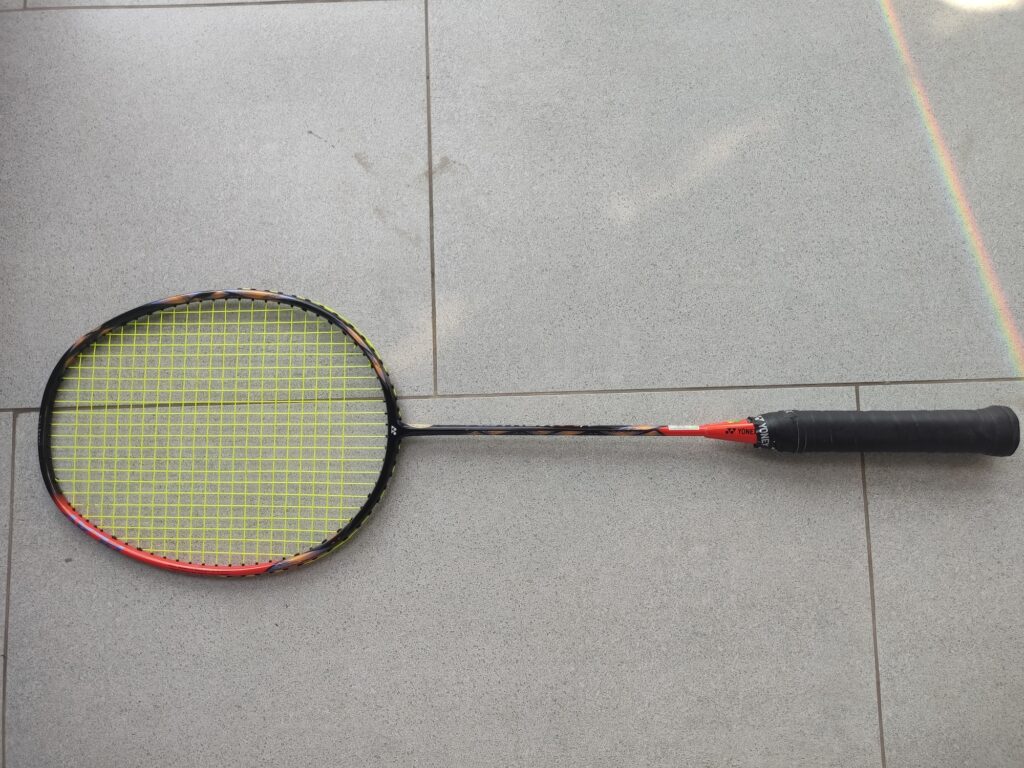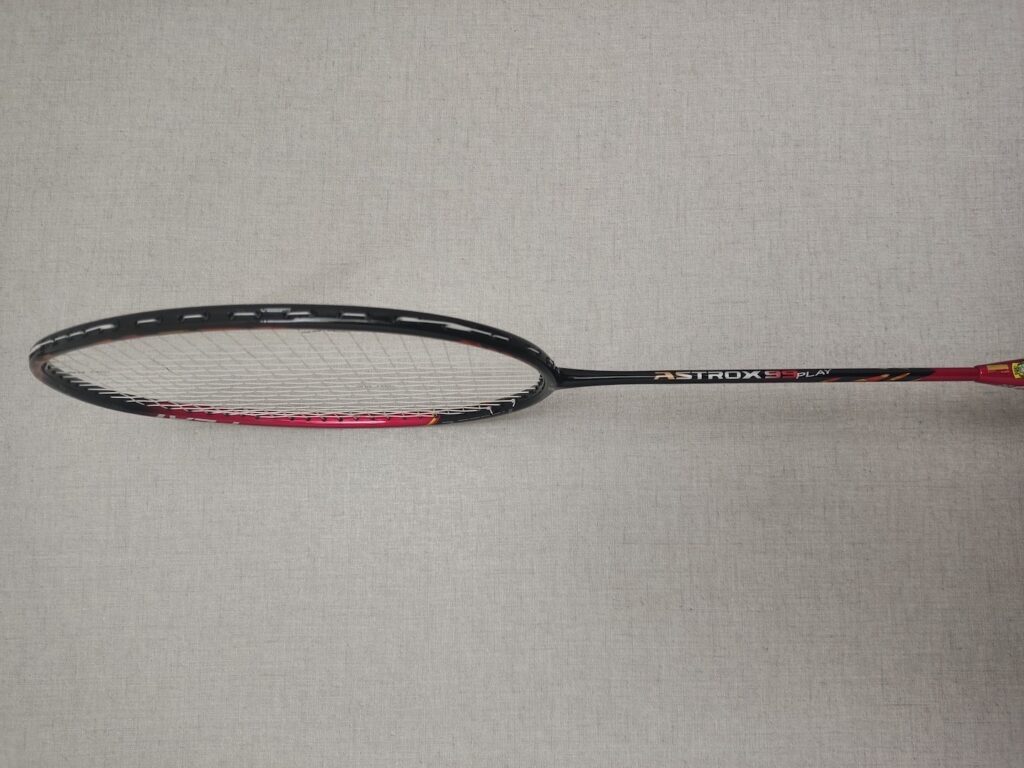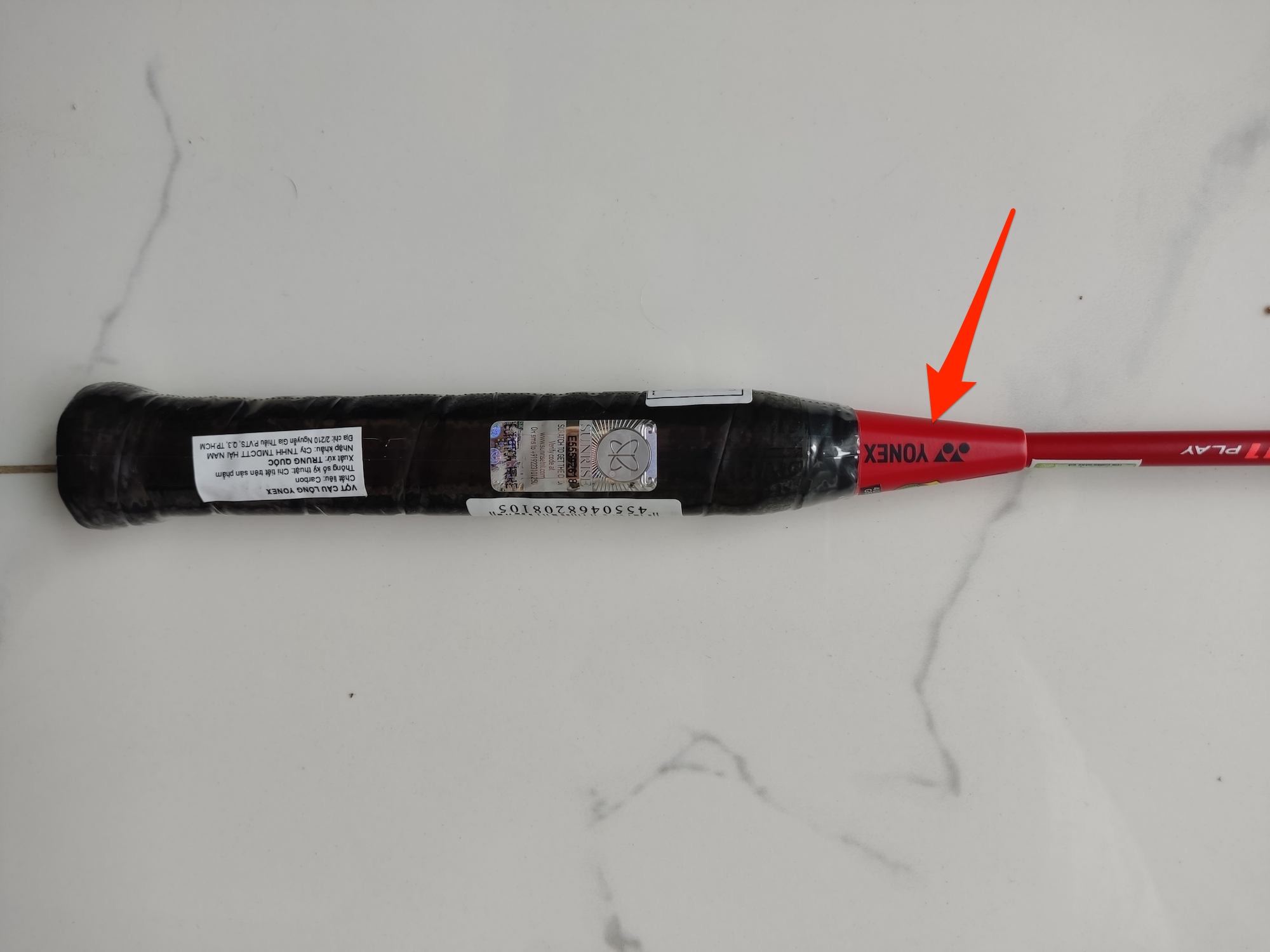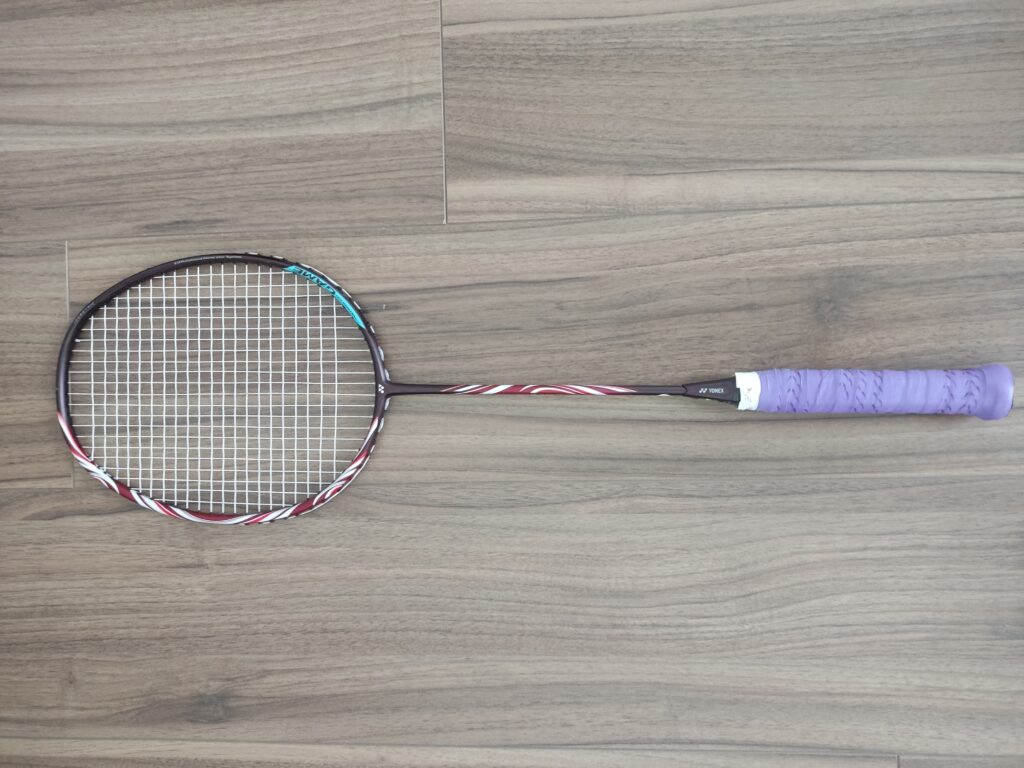Hey there, Yonex fanboy (or girl!) Do you know that feeling of entering a badminton store, looking for the best Yonex badminton rackets, but feeling overwhelmed by the sheer number of similar-looking rackets?
That’s how I felt when I got my first ‘serious’ racket. After buying several rackets that weren’t suitable for me, I decided to test my way through the popular options to find one that suits me (and hopefully help you do the same.)
I’ve mostly tested Yonex badminton rackets, but as I venture into testing other brands it makes sense to break down the best Yonex rackets into its own guide.
The one thing I like about their racket collection is that they seem to have switched their naming convention to something easier for us players to follow without a degree in rackets.
Contrary to what I had imagined before I knew much about rackets, you can’t just splurge, go for the highest price, and be done with it. The pricing on badminton rackets and the technical level they require to be mastered tend to follow each other, meaning that the higher the price the better a player you have to be.
On newer models, Yonex uses the following breakdown:
| Yonex Racket Name | Player Level | Differences |
|---|---|---|
| Pro | Advanced and pro players | The best of the best |
| Tour | Advanced and pro players | A slightly cheaper but similar to the Pro model |
| Game | Intermediate players | For intermediates |
| Play | Beginners | For beginners |
Each player has their individual preferences, so this table is meant as a general guideline. I regularly see intermediate players preferring certain top-tier rackets as some models come with configurations that aren’t as technically demanding despite being used by pro players on the world tour like the Yonex Astrox 77 Pro.
On the other hand, not every racket lineup comes with models for all four levels. For example, the popular Yonex Astrox 77 comes in Play, Tour, and Pro models, but without a dedicated Game model for intermediate players as the Pro can be suitable for them.
Another example is the current world number one in men’s singles, Viktor Axelsen’s preferred racket, the Yonex Astrox 100ZZ which doesn’t come in the Play model for beginners and an intermediate model that requires a bit of work.
Yonex has three overarching racket categories:
| Yonex Racket Category | Weight Balance | Description |
|---|---|---|
| Astrox | Head heavy | For smash and attack |
| Arcsaber | Even balanced | For control and precision |
| Nanoflare | Head light | For defense |
They have a few more series, but they seem to be phased out as they haven’t promoted or launched any new rackets in those series for a while so I won’t cover those here.
As you can see, each of the three racket categories is leaning in a certain direction and comes with its own pros and cons.
The more I speak to readers about their preferences, the more I realize that we tend to want something that’s swift in net game but offers some extra power in the rear court. In other words, we want all the benefits but not any of the downsides (myself included).
Yonex must have heard our prayers as they seem to be working on new ways to approach their rackets. For example, historically you’d expect the most powerful smash to come from a head-heavy Astrox racket, but in 2023 their head-light Nanoflare 1000Z set the Guinness World Record for the fastest smash.
This was a marketing stunt without any comparison with their head-heavy rackets, though, so take it with a grain of salt.
Anyway, not to confuse you but there’s a lot more to it than just that one factor as, head heavy attacking rackets, for example, tend to be useful if your technique isn’t amazing, you’re late to the shuttle and just need to whip it over the net to stay alive in the rally.
To that, another component is whether you’re prioritizing developing your game, as certain rackets are more suitable for that, or if you just want a racket that’s fun to play with.
Instead of confusing you with all of this upfront, I’ll bring up the relevant points as we go. This guide is broken down into different chapters depending on whether you’re a beginner, intermediate, or advanced/pro player.
As a general rule, if you’re playing singles you’ll likely prefer the 3U weight class and 4U if you’re playing doubles (although 3U isn’t available for all models).
Now that I’ve been rambling on long enough about rackets and you have a lay of the land, we can dive into the best Yonex badminton rackets.
Table of Contents
Hey reader, a quick interruption... I’m experimenting partnering with webshops that sell badminton gear, like Amazon. I’ll include links to buy the gear I review and if you do, they’ll pay me a small commission. That doesn’t change your price and you’ll get more play-tested gear as a result but I thought it was fair to let you know. As an Amazon Associate, I earn from qualifying purchases. I appreciate your support, Aske
The best Yonex badminton rackets for beginners
There are far too many beginner players out there to simply give one recommendation. Instead, I’m breaking it up into two different categories: the entry level for those who are brand new to badminton and perhaps have been playing in the garden but are learning from scratch.
The other is the high beginner player who is on court regularly but struggles to hit clean shots and generate enough power to hit from backline to backline effortlessly.
Entry level – Yonex Astrox 77 Play

If you’re an entry-level player wanting this particular brand, the best Yonex badminton racket for you will be one that has a highly flexible shaft to help hit the shuttle cleanly and generate power.
Yonex Astrox 77 Play is a great fit as it comes with slight head weight to aid with more power both in longer shots, but also when you’re late to the shuttle and just want to send it back over the net before it hits the ground.
It doesn’t have as much power as the next racket we’ll explore in a moment, which is good at this stage as it’ll make your shoulder and forearm less tired while also being more flexible than many beginner rackets to help make your game easier to play.
I’ve tested the Astrox 77 Play racket and you can find my detailed review here.
Regular/high beginner – Yonex Astrox 99 Play

Next, there’s the beginner player who plays regularly and might even know a game tactic or two. At this point, you tend to have a better sense of your own game, and strengths and weaknesses even if you don’t know your playing style just yet.
Your shot timing is likely slightly better and you’re seeing the value in powerful shots, but might not be able to generate as much power as you dream of.
If that’s you, Yonex’s Astrox 99 Play will be the best Yonex badminton racket for you. It’s the most powerful, head-heaviest racket in the Yonex arsenal for beginners. It requires a bit more strength and technique than the Astrox 77 Play, but in return, you get power. It’s a BEAST.
I’ve tested the Astrox 99 Play and you can find my detailed review here.
Next, let’s look at the best Yonex badminton rackets for intermediate players.
The best Yonex badminton rackets for intermediates
The intermediate level is among the most difficult in terms of finding the right racket as there’s a huge difference between a low-intermediate and upper-intermediate player.
So in this chapter, I’m looking at four different categories.
The best Yonex badminton rackets for low intermediate players wanting to develop their game: Yonex Arcsaber 11 Play

At the low intermediate level, we tend to have a better grasp of both stroke technique and game tactics.
We tend to still have a love for power and attack games but tend to lose a lot of points through faults and easy mistakes. Choosing a racket that forces you to play longer rallies instead of a pure smash-based one can take your skills to new heights.
I’ve had a great experience with the Arcsaber 11 Play and I recommend it as the best Yonex badminton racket for low-intermediate players wanting to develop their game.
You won’t have a particularly strong smash, which forces you to find other ways to win rallies. This racket has been a tremendous help in developing my own game at this level.
Here’s my test and review of the Arcsaber 11 Play.
The power-loving mid/upper intermediate: Yonex Astrox 100 Game

This category is for the slightly more skilled player who is addicted to power. Here we have the younger sibling of Viktor Axelsen’s ultra-demanding Astrox 100ZZ.
This intermediate-friendly smash machine is named Astrox 100 Game. I’ve found it the best Yonex badminton racket for power at the intermediate level because it feels faster and swifter when you’re slicing through the air compared to some of their similar models.
It took me by surprise because it has much more weight at the head than most other Yonex intermediate rackets and some other players who have tried it even felt that it was too much for doubles when combining it with a power string like the Yonex BG80. If that’s a concern for you, consider using a control-based string instead.
Here’s my test and review of the Astrox 100 Game.
The defense-lover with a need for speed: Yonex Nanoflare 1000 Game
At this level, many players want to move away from raw power in favor of a more nuanced game with better defense to avoid losing points and causing easy mistakes that could have been avoided.
For that, I’ve found the Nanoflare 1000 Game a good Yonex badminton racket that’s fun to play with. It feels fast and often took me by surprise in terms of the shots I was able to defend even if my reactions were slow or I was late.
Despite that, I found that it had more power than I expected. The younger sibling of the Nanoflare 1000Z set the smash record I mentioned earlier. For someone with limited technique like me, it packs the least power of the bunch in this chapter, but I could still produce a powerful smash when I was well-positioned.
Here’s my test and review of the Nanoflare 1000 Game.
Next, let’s move on to rackets for highly skilled players.
The best Yonex badminton rackets for advanced and pro players
I haven’t tested these rackets as I’m frankly not skilled enough, so these suggestions are based on popularity among the pros and which type of playing style they tend to be suitable for (but take it with a grain of salt).
Power, power, power: Yonex Astrox 100ZZ
First, we have the power category with the Yonex Astrox 100ZZ being the best Yonex badminton racket if we judge by the number of pro players using it.
It’s the preferred racket of the current world #1 in men’s singles, Viktor Axelsen, Akane Yamaguchi the #2 in women’s single, Takuro Hoki (#4 in MD), and Chen Qing Chen (#1 in WD).
Most non-pro players who try it seem to agree that it’s extremely demanding yet crazy-powerful.
Speed and defense: Yonex Nanoflare 800
If you’re on the other side of the spectrum and prefer speed, the Yonex Nanoflare 800 might be the best Yonex badminton racket for you. It’s used by the likes of Chiharu Shida (#2 in WD), Lee Yang (#12 in MD), Jia Yi Fan (#1 in WD), and Thom Gicquel (#6 in XD).
The racket’s unusually slim shaft is supposed to slice through the air and prepare you well for counterattacks or fast-drive shots.
Other racket guides
- If you’re flexible with the brand and want to go beyond Yonex, look at the best badminton rackets here
- If you’re looking for the best badminton shoes, I’ve been testing a bunch and recommend them in this guide
- For intermediate players, I’ve also been testing shuttles here